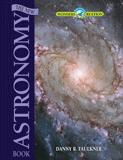Kids Feedback: What Exactly is the Moon?
My daughter just learned about the moon in her 3rd grade class. She was told the moon reflects light from the sun. However, in Genesis it tells us on that day of Creation there were 2 great lights, one to govern the day and one to govern the night. So, what exactly is the moon? A star? It’s own source of light?
– Michigan, USA
Your daughter’s school teacher is correct—the moon does reflect light from the sun. It is a satallite orbiting the earth, not a star. “The definition of a star is any large, self-gravitating gaseous sphere with continued nuclear reactions in its core. Our sun is a star.”1
Now I’m sure you are wondering about the passage in Genesis that you mentioned in your question. The passage describes the creation of the sun, moon and stars on Day Four of the Creation Week.
Then God said, “Let there be lights in the firmament of the heavens to divide the day from the night; and let them be for signs and seasons, and for days and years; and let them be for lights in the firmament of the heavens to give light on the earth”; and it was so. Then God made two great lights: the greater light to rule the day, and the lesser light to rule the night. He made the stars also. God set them in the firmament of the heavens to give light on the earth, and to rule over the day and over the night, and to divide the light from the darkness. And God saw that it was good. So the evening and the morning were the fourth day. Genesis 1:14–18
The Hebrew word for “rule” in these verses is “memshalah,” which means to have dominion. The Hebrew word for “give light” in these verses is “owr” and it means to cause or give light.2 So, this Hebrew word does not specifically mean that the moon produces its own light for the earth. The moon certainly does give light to the earth—it is the light reflected from the sun.
“The statement ‘to give light on the earth’ does not in any way contradict what we observe about the sun and moon. The sun ‘gives’ light on the earth by burning gas and emitting high-energy photons of light, whereas the moon ‘gives’ light on the earth by reflecting the photons of light. The sun and moon both ‘give’ light, just by different means.”3
The moon gives us a lesser amount of light for the earth during the night, compared to the light provided by the sun during the day. Have you ever noticed that when there is full moon, the stars are more difficult to observe? It is easy to see why the moon is said to rule the night! The moon also helps us define lengths of time that have passed. Some calanders even include information about the phases of the moon during the month.
To learn more about the moon, and the differences between the moon and stars, please read the following:
Parents, if your children have any questions, please submit them using the “contact us” section on our main website.
Footnotes
- Ron Samec, “The Heavens Declare . . . A Young Solar System,” Answers Magazine, v3 n1, January–March, 2008, http://www.answersingenesis.org/articles/am/v3/n1/heavens-declare-young-solar-system.
- The Hebrew word definitions are taken from Strong’s Exhaustive Concordance. You can use an online version of Strong’s Exhaustive Concordance at http://www.biblestudytools.com/concordances/strongs-exhaustive-concordance/.
- David Wright, “Does the Moon Really Give Light?” Answers Magazine, v3 n1, January–March, 2008, http://www.answersingenesis.org/articles/am/v3/n1/does-moon-give-light.
Recommended Resources
- © 2024 Answers in Genesis
- Privacy Policy
- Contact
- About



